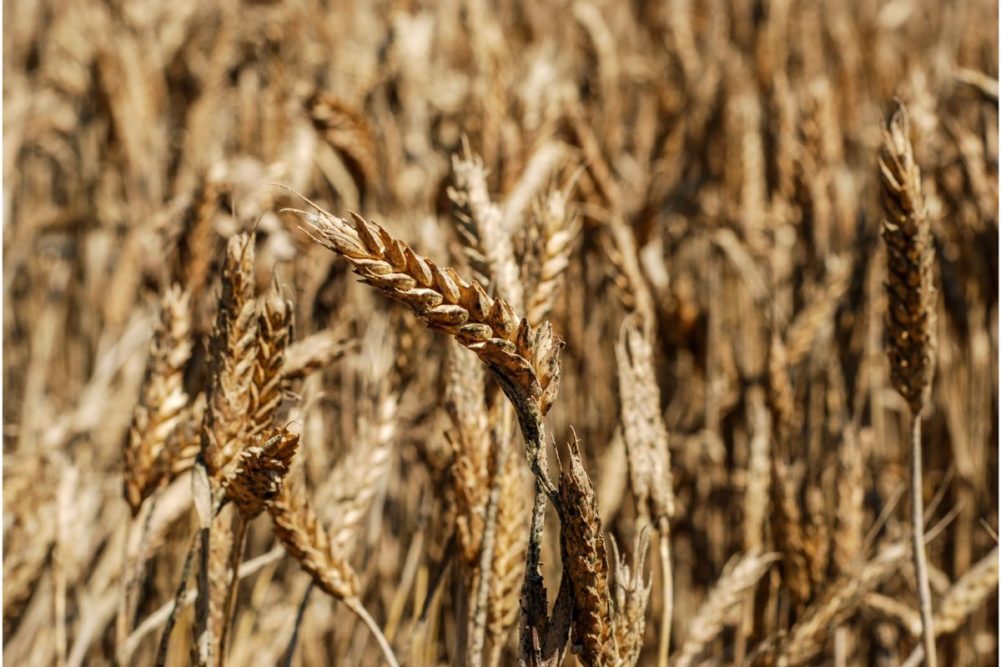WASHINGTON, DC, US — The US Department of Agriculture in its June World Agricultural Supply and Demand Estimates (WASDE) report marginally raised from May its forecasts for domestic wheat, corn and soybean supplies for 2023-24.
For wheat, the only one of the three major US crops in the 2023-24 marketing year (since June 1), a 6-million-bushel increase in 2023 production forecast at 1.136 billion bushels was carried through to the same increase for carryover on June 1, 2024, forecast at 562 million bushels. There were no changes from May to forecast 2023-24 wheat domestic use or exports. The average price of wheat paid to farmers in 2023-24 was forecast at $7.40 per bushel, down 30¢ from May and down $1.15, or 13%, from 2022-23.
The boost in wheat production was the result of a 2% increase from May in forecast hard red winter outturn at 525 million bushels, more than offsetting 1% decreases for both soft red winter at 402 million bushels and white winter at 209 million bushels. The increase in hard red winter wheat mostly resulted from beneficial rainfall in the dry southern Plains late in the growing season despite subpar crops in Oklahoma and top-producing Kansas. Production estimates were raised from May for Colorado, Oklahoma and Texas but were unchanged for Kansas, Nebraska, South Dakota and Montana.
The USDA in its weekly Crop Progress report said winter wheat as of June 11 was 1% harvested in Kansas, 26% in Oklahoma and 46% in Texas. Combines should move swiftly northward due to smaller crops in Oklahoma and Kansas although rain has caused some intermittent delays in Oklahoma.
For corn and soybeans, changes from May made to 2022-23 estimates were carried over to higher 2023-24 beginning stocks and carryover, with no changes to 2023-24 domestic use or export forecasts.
Corn carryover on Sept. 1, 2023, was forecast at 1.452 billion bushels, up 35 million bushels from May based on forecast 2022-23 exports at 1.725 billion bushels, down 50 million bushels, partially offset by a 15-million-bushel drop in imports at 25 million bushels. Corn carryover on Sept. 1, 2024, was forecast at 2.257 billion bushels, up 35 million bushels from May. The average price of corn paid to farmers in 2023-24 was unchanged from May at $4.80 per bushel, down $1.80 per bushel, or 27%, from 2022-23.
Soybean carryover on Sept. 1, 2023, was forecast at 230 million bushels, up 15 million bushels from May based on a 15-million-bushel decline in 2022-23 soybean crush, forecast at 2 billion bushels. Soybean carryover on Sept. 1, 2024, was forecast at 350 million bushels, up 15 million bushels from May. The average price of soybeans paid to farmers in 2023-24 was unchanged from May at $12.10 per bushel, down $2.10 per bushel, or 15%, from the current year.
The outlook from a meteorologist and several analysts at the recent Sosland Publishing Co. Purchasing Seminar in Kansas City, Missouri, US, was for generally larger grain and oilseed supplies, helped by increased planted and harvested area and favorable weather during the bulk of the North American growing season, with the main area of concern in Asia due to the potential impact of El Niño, which tends to bring dry conditions. Dryness in June in North America was expected to give way to improved moisture conditions in July.
June dryness was reflected in the USDA’s latest corn and soybean crop ratings. Corn in the 18 major producing states was rated 61% good to excellent as of June 11, down from 64% a week earlier and 72% at the same time last year. Soybeans in the 18 major states were rated 59% good to excellent as of June 11, down from 62% the prior week and 70% a year ago.
US wheat numbers will become more complete in July when the USDA makes its first survey-based durum and other spring wheat estimates, adding to survey-based winter wheat estimates that began in May. The first survey-based corn and soybean estimates will be released in August. Estimates of all crops will benefit from the June 30 Acreage report, which will update area forecasts from the March 31 Prospective Plantings report. The USDA in its May WASDE report, based on Prospective Plantings data and trend analysis, forecast record high US corn and soybean production in 2023.






